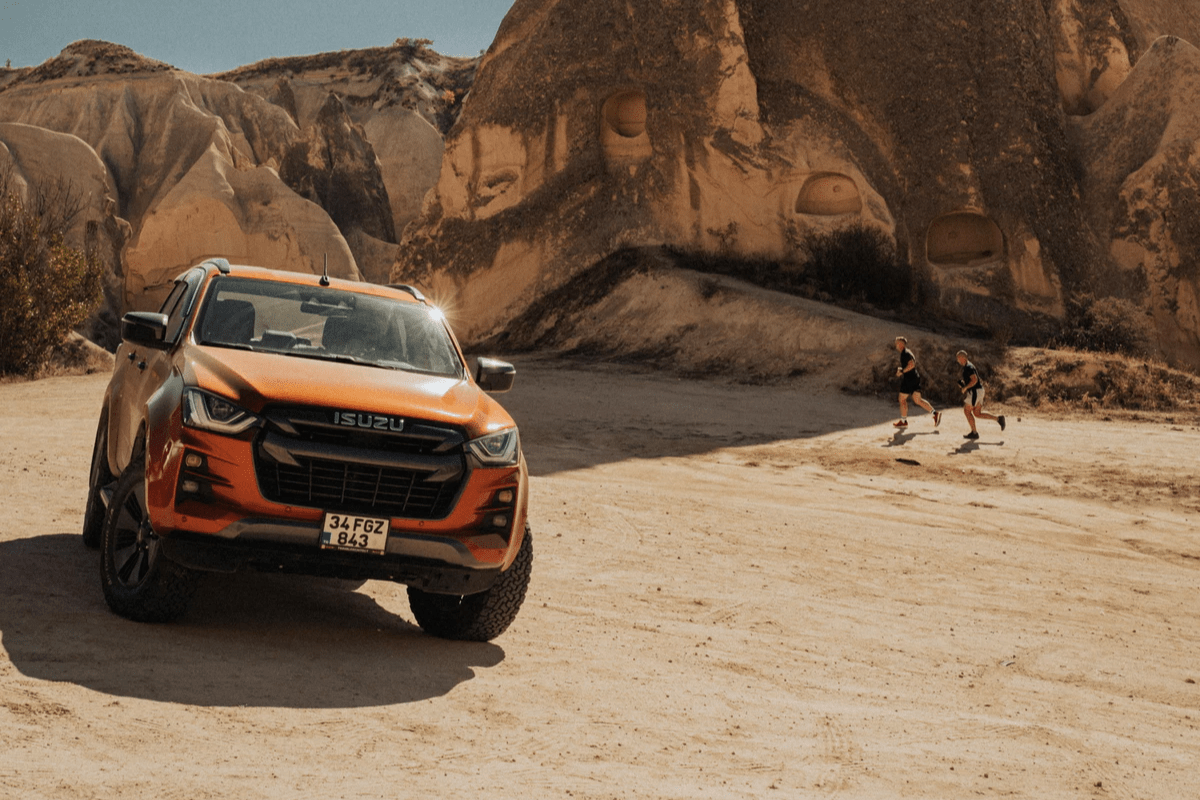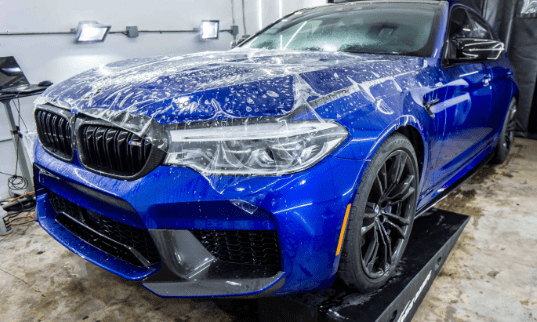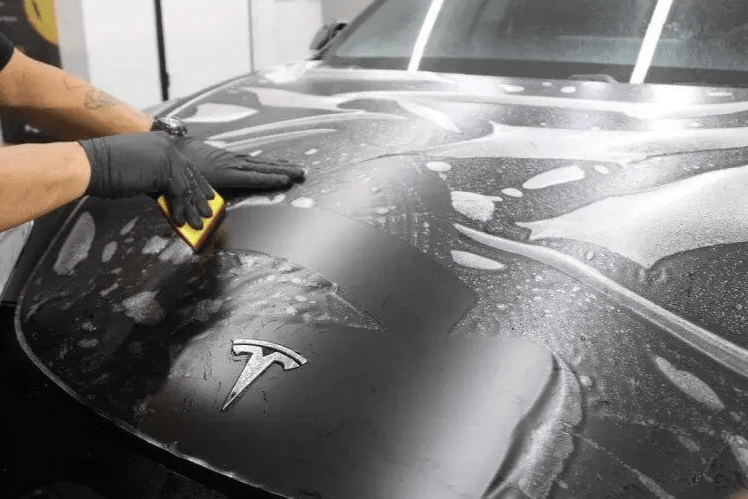When it comes to maintaining the pristine look of your vehicle, paint protection film (PPF) is one of the most effective solutions available today. This clear, durable film is designed to shield your car's paint from various types of damage, including scratches, chips, stains, and the harmful effects of UV rays. In this comprehensive guide, we will explore the benefits of wrapping your vehicle in PPF, the approximate costs for different types of vehicles, and the time required to complete the job. Give us a call or fill out a form for paint protection film in Minneapolis!
What is Paint Protection Film?
Paint protection film, also known as clear bra, is a thermoplastic urethane film that is applied to the painted surfaces of a vehicle. Originally developed for military use to protect helicopter blades from debris, PPF has since evolved into a popular choice for car enthusiasts and everyday drivers alike who want to preserve the look of their vehicles.
PPF is virtually invisible and does not alter the appearance of your car. It can be applied to the entire vehicle or specific areas that are more prone to damage, such as the front bumper, hood, side mirrors, and door edges.
Benefits of Paint Protection Film
1. Protection from Physical Damage
- Scratch and Chip Resistance: One of the primary benefits of PPF is its ability to protect your vehicle's paint from scratches and chips caused by road debris, gravel, and minor impacts.
- Self-Healing Properties: Many modern PPFs have self-healing properties, meaning minor scratches and swirls can disappear with the application of heat, such as from the sun or a heat gun.
2. Preservation of Aesthetic Appeal
- Maintains Paint Integrity: By acting as a protective barrier, PPF preserves the original paint job, ensuring your vehicle looks newer for longer.
- Stain Resistance: PPF is resistant to stains from bird droppings, bug splatter, tree sap, and other environmental contaminants that can etch into paint over time.
3. UV Protection
- Prevents Fading and Discoloration: PPF protects against the harmful effects of UV rays, which can cause paint to fade and discolor over time.
4. Ease of Maintenance
- Simplifies Cleaning: The smooth surface of PPF makes it easier to clean your vehicle, as dirt and grime do not adhere as strongly to the film compared to unprotected paint.
5. Cost Savings
- Reduces the Need for Repairs: By preventing damage to the paint, PPF can save you money on costly paint repairs and touch-ups in the long run.
- Increases Resale Value: A well-maintained paint job can increase your vehicle's resale value, making PPF a wise investment.
Cost of PPF Wrap
The cost of applying PPF varies depending on the size of your vehicle, the complexity of the installation, and the specific areas you want to cover. Here’s a breakdown of approximate costs for different types of vehicles:
1. Sedan
- Partial Wrap: Covering high-impact areas like the front bumper, hood, side mirrors, and fenders can cost between $500 and $1,500.
- Full Wrap: A full PPF wrap for a sedan typically ranges from $2,000 to $4,000.
2. SUV
- Partial Wrap: For an SUV, a partial wrap can range from $700 to $2,000.
- Full Wrap: The cost for a full wrap on an SUV usually falls between $3,000 and $5,000.
3. Truck
- Partial Wrap: Protecting the front sections and other vulnerable areas of a truck with a partial wrap can cost between $800 and $2,500.
- Full Wrap: A full PPF wrap for a truck generally ranges from $3,500 to $6,000.
These prices are estimates and can vary based on factors such as the brand of PPF used, the reputation of the installer, and any additional services like detailing or ceramic coating that might be offered as part of the package.
Installation Process and Time Required
The installation of PPF is a meticulous process that requires skill and precision. Here’s what you can expect during a PPF installation:
1. Vehicle Inspection and Preparation
- The installer will thoroughly inspect your vehicle for existing damage and imperfections.
- The vehicle is then washed and detailed to ensure a clean surface for the film application.
2. Film Cutting
- PPF is usually pre-cut to fit specific vehicle makes and models using computer software and cutting machines. This ensures a precise fit.
3. Application
- The film is carefully applied to the vehicle's surface. Installers use a solution of water and soap to position the film accurately before it adheres.
- The film is then smoothed out using squeegees to remove air bubbles and excess solution.
4. Curing
- After application, the film needs time to cure. This can take several days during which the vehicle should be kept clean and dry.
The time required to complete a PPF installation depends on the extent of coverage:
- Partial Wrap: A partial wrap typically takes 1 to 2 days to complete.
- Full Wrap: A full wrap can take anywhere from 2 to 5 days, depending on the size of the vehicle and the complexity of the job.
Choosing the Right Installer
Selecting a reputable installer is crucial for ensuring a high-quality PPF application. Here are some tips to help you choose the right professional:
1. Experience and Expertise
- Look for installers with extensive experience and a portfolio of completed projects.
- Ask about their training and certifications from PPF manufacturers.
2. Customer Reviews and Testimonials
- Check online reviews and ask for references from previous customers.
- Positive feedback and high ratings are good indicators of reliable service.
3. Warranty and Aftercare
- Inquire about the warranty offered on the PPF and the installation.
- Ask about aftercare services and recommendations for maintaining the film.
Frequently Asked Questions (FAQs) About PPF
1. How long does PPF last?
- High-quality PPF can last between 5 to 10 years, depending on factors such as exposure to the elements, driving conditions, and proper maintenance.
2. Can PPF be removed?
- Yes, PPF can be safely removed by a professional without damaging the vehicle's paint. This makes it a reversible investment if you decide to sell your car or switch to a different protection solution.
3. Will PPF yellow over time?
- Modern PPF products are designed to resist yellowing. However, cheaper or lower-quality films may be more prone to discoloration. It’s important to choose a reputable brand and installer.
4. Can PPF be applied over ceramic coating?
- PPF should be applied directly to the paint for optimal adhesion. However, ceramic coating can be applied over PPF to enhance its protective properties and make cleaning easier.
5. How do I maintain my vehicle with PPF?
- Wash your vehicle regularly using a mild detergent and avoid abrasive cleaning tools.
- Avoid pressure washing too close to the film edges.
- Consider applying a ceramic coating over PPF for added protection.
Paint Protection Film Conclusion
Investing in paint protection film is a smart decision for any vehicle owner who wants to maintain the aesthetic appeal and value of their car. PPF offers unmatched protection against physical damage, UV rays, and environmental contaminants, making it a worthwhile investment in the long run. By understanding the costs, installation process, and benefits, you can make an informed decision about whether PPF is right for you and your vehicle.
Whether you drive a sedan, SUV, or truck, PPF provides peace of mind knowing that your vehicle’s paint is safeguarded against the rigors of daily driving. So, take the step towards preserving the beauty of your vehicle and consider a PPF wrap today.
Thank you for reading our ultimate guide on paint protection film (PPF).
From Your Professional PPF Wrap Specialist,
Deez Wraps, Inc.




